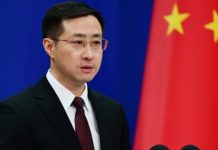By Dai Yonghong
Besieged with a raging coronavirus pandemic and growing social contradiction, India’s penchant for playing geopolitical games isn’t doing the country any good. Recently New Delhi announced measures to tighten telecom gear controls, which has been widely believed as targeting major Chinese suppliers including Huawei and ZTE. The discriminative stance is certain to backfire on the relatively poor South Asian country, diminishing its economic growing momentum and throwing more of its people into poverty. Without naming specific firms, Indian authority announced plan to roll out lists of “trusted” and “blacklisted” telecom equipment suppliers. According to a Reuters report, some Indian government officials have privately expressed concerns over local telecom carriers’ adoption of Huawei gear, citing Trump administration’s guise of protecting “national security”.
Even a few Indian news outlets were frank saying that the measures were clearly targeting Chinese suppliers, including Huawei and ZTE.
The latest plan to tighten control on telecom gear comes after a series of India moves assaulting Chinese companies this year, such as banning more than 200 Chinese apps, heightened scrutiny of Chinese investments, and prolonging clearance time of Chinese imports. In addition to the border dispute between the two countries, India has been complaining its widening trade deficit with China. For a period of time, New Delhi seems to have given up its strategic autonomy and tied itself to the chariot of US hegemony, constantly provoking China from the border issue to intentional economic confrontations.
However, India which for a time had enjoyed high expectations of a very promising economic growth potential, is now sliding downward amid a painful contraction, which could last three to five years. Per latest IMF estimation, the Indian economy may shrink 10.3 percent in 2020, comparing to the average 3.4 percent contraction of other South Asian countries. With COVID-19 confirmed cases approaching 10 million, the populous country notable for its striking wealth gap has seen rising internal struggles, including large-scale farmers’ protests and urban workers’ strikes.
Upholding an ambitious goal of growing into a dominant regional power, however, New Delhi’s inconstant policy and lack of comprehensive strategy have seriously hindered the development of India’s domestic industries. Increasingly, global investors have qualms about the country’s economic prospect. As for India’s telecom industry, following the baseless attacking agenda of the US and trying to squeeze out global 5G frontrunner Huawei and ZTE will ultimately delay India’s upgrading to the new network.
The same logic goes to other Indian industries as well which have developed a highly integrated connection with Chinese supplies, including auto parts, medical materials, not to mention China’s ample capital reserve and advanced technology and corporate management. Once capital turns away, it’s going to be hard to lure them back. In the meantime, the regional economic integration in East and Southeast Asia has speeded up, following the ink of the mega free trade deal – Regional Comprehensive Economic Partnership (RCEP) – covering about 30 percent of the global economy and population.
Though the trade pact still leave a door open for India, it’s unlikely for it to join in the foreseeable future, as the ship of the seemingly speeding recovery in post-pandemic era sailed without India onboard. Unlike the developed economies which are shored up by solid economic foundations, playing geopolitical games with China is not affordable for a relatively poor country like India. Now it’s time for New Delhi to think it over.
–The Daily Mail-Global Times
news exchange item



